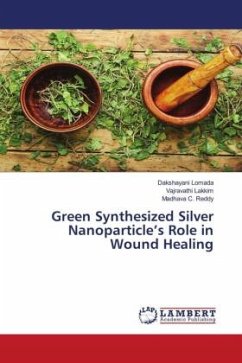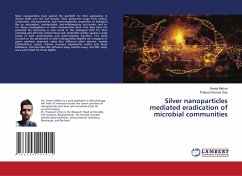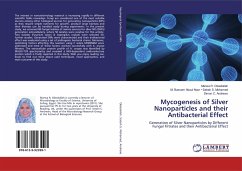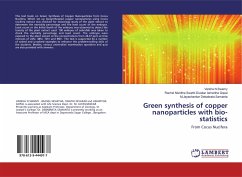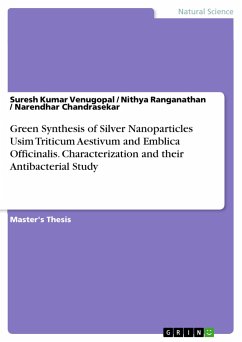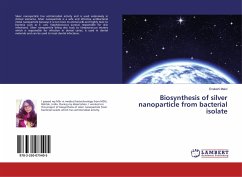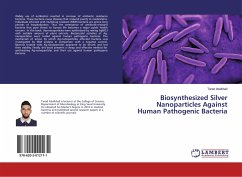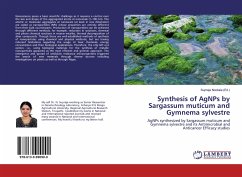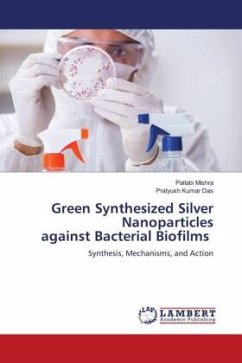
Green Synthesized Silver Nanoparticles against Bacterial Biofilms
Synthesis, Mechanisms, and Action
Versandkostenfrei!
Versandfertig in 6-10 Tagen
29,99 €
inkl. MwSt.

PAYBACK Punkte
15 °P sammeln!
Biofilms are multi-cellular communities of microorganisms that form and attach to living or nonliving surfaces. An extracellular polymeric matrix surrounds biofilms. Biofilm formation is responsible for a variety of concerns in the pharmaceutical, nourishment, and marine applications, contributing to economic and medical concerns. Biofilm-related issues are becoming increasingly essential in the case of clinical infections, and they are highlighted as a significant issue in influencing microbiota. Researchers have to simplify various antibiofilm strategies so that they not only get confined to...
Biofilms are multi-cellular communities of microorganisms that form and attach to living or nonliving surfaces. An extracellular polymeric matrix surrounds biofilms. Biofilm formation is responsible for a variety of concerns in the pharmaceutical, nourishment, and marine applications, contributing to economic and medical concerns. Biofilm-related issues are becoming increasingly essential in the case of clinical infections, and they are highlighted as a significant issue in influencing microbiota. Researchers have to simplify various antibiofilm strategies so that they not only get confined to one specific method but also simultaneously choose various other ways adopted for the existence and growth of microbes in the environment. The latest and unique antibiofilm strategies consistently beat the traditional methods that are more effective in the eradication of biofilm-related problems. This study describes one of the major advanced strategies i.e., the use of nanoparticles for biofilm eradication. Overall, the findings of the study showed which green synthesized nanoparticles could have been a useful approach in reducing biofilm-related infections.



